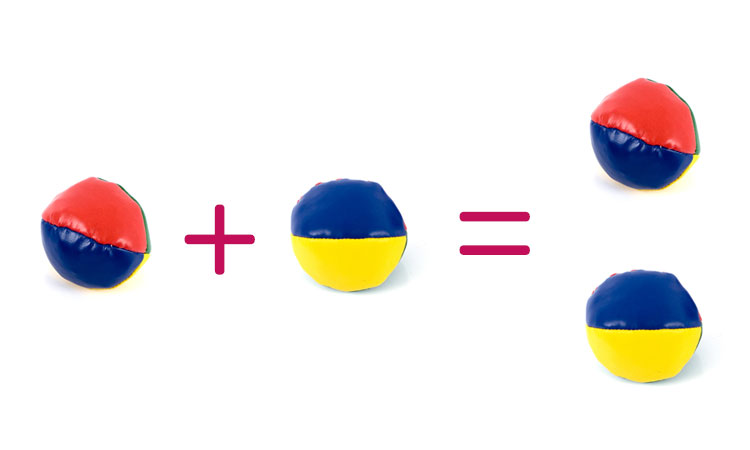MA3: Bean Bag Addition
1. Overview
“Bean Bag Addition” teaches basic addition by connecting counting with combining sets of objects. Using their numeral recognition skills, children will be able to add abstract numerals.

2. Materials
Bean bags, balls, peas, or any other object that you have several of.
↑ Top3. Activity
Take two bean bags and place them apart on a table. Demo how the activity is done first. Count each bean bag.
Adult: One [Points to bean bag in first pile]… One [Points to bean bag in second pile]
Combine the two bean bags and count the new pile.
Adult: One [Points to first bean bag in pile]… Two [Points to second bean bag in pile]…
I just added this one bean bag to the other bean bag!
Now I have two bean bags!
One bean bag plus one bean bag equals two bean bags!
Spread the bean bags apart. Now it is your child’s turn.
Adult: Your turn. How many bean bags are in this pile? [Points to first pile]
Child: One
Adult: How many bean bags are in this next pile? [Points to second pile]
Child: One
Adult: Now combine the two piles.
How many bean bags are there now? Count them.
Child: One…Two
Adult: Yes! There are two bean bags.
One bean bag plus one bean bag equals two bean bags. Now you say it.
Child: One bean bag plus one bean bag equals two bean bags.
Repeat this several times before adding bean bags to either pile.
When your child is ready, add bean bags to only one pile so that you are only adding by one. Once your child is confident with +1, move to +2. This activity will take several months (if not years) to master.
↑ Top4. Confidence Builder
To make the activity easier, demo the activity and then guide your child’s hand during her turn. Keep guiding her with your hands and have her repeat after you every time you count.
↑ Top5. Extensions
Once your child has mastered the basic game, use more abstract objects, such as strips of blank paper or small dots with numerals written on them. For example, if you use small dots, write the number 4 on all dots in a pile of 4 dots. Make sure the number written on the dots matches the number of dots in the pile to avoid confusing your child.
Leave a Reply
